Moonflower, also known as the “exotic mystery flower,” blooms only under the moonlight. This unique and intriguing flower has captivated people’s interest and fascination. Have you ever wondered about the origins and significance of this enchanting flower? Join us as we explore the fascinating world of Moonflowers and discover their captivating beauty, along with helpful tips on how to cultivate and care for them.
1 What is a Moonflower?
Origin and Significance of Moonflowers
Moonflowers, with the scientific name Ipomoea alba, are native to tropical and subtropical regions. They are predominantly found in Northern Argentina, Mexico, and Florida.
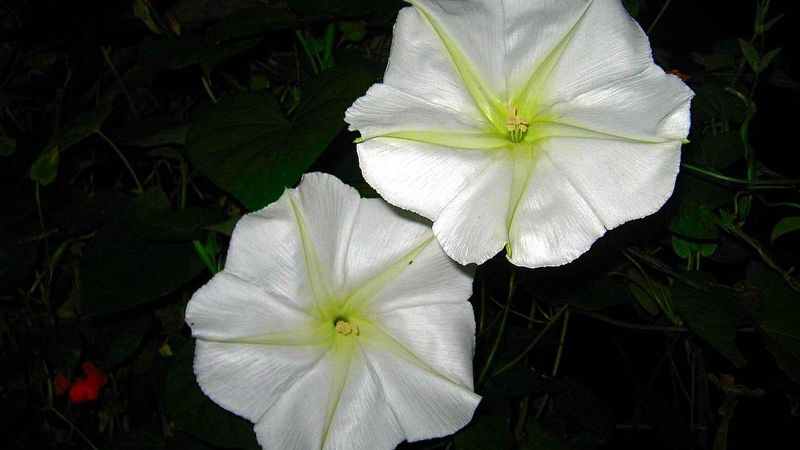 Moonflowers originate from tropical and subtropical regions
Moonflowers originate from tropical and subtropical regions
True to their name, Moonflowers bloom only in the evening, much like the moon, and close up with the arrival of dawn.
This fascinating behavior symbolizes the enigmatic and mystical nature of Moonflowers. Additionally, they represent allure, sophistication, and romance with their captivating presence.
Moonflowers embody the essence of mystery, attraction, and romantic allure.
Characteristics of Moonflowers
Moonflowers are perennial vines with long, slender stems. Their leaves span 5-15 cm in length, and their stalks measure 5-20 cm. When in bloom, these flowers exude a delicate, sweet fragrance.
During the day, Moonflowers keep their petals tightly closed, appearing rather small. However, as the sun sets and darkness falls, their petals unfold majestically. These flowers can reach an impressive diameter of up to 14 cm when fully bloomed.
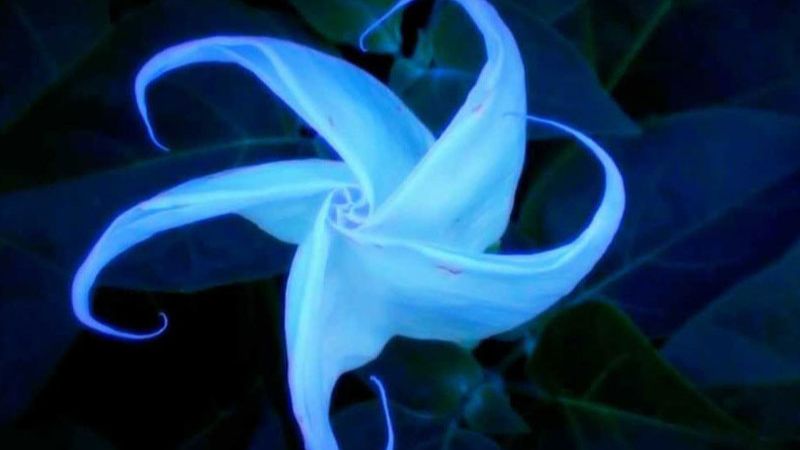 Distinctive features of Moonflowers
Distinctive features of Moonflowers
2 Benefits of Moonflowers
Health Benefits
Moonflowers possess a sweet taste and cooling properties, making them highly effective in regulating body temperature, detoxifying, and treating ailments such as acne and coughs.
 Moonflowers aid in treating coughs and constipation
Moonflowers aid in treating coughs and constipation
Additionally, they are beneficial in alleviating constipation, frequent urination, painful urination, and blood in the urine, contributing to overall well-being.
Aesthetic Benefits
Moonflowers, with their exquisite and pure beauty, can enhance your garden and living space with a touch of uniqueness. In the evening, when Moonflowers bloom, they create a romantic ambiance with their sweet fragrance and stunning appearance.
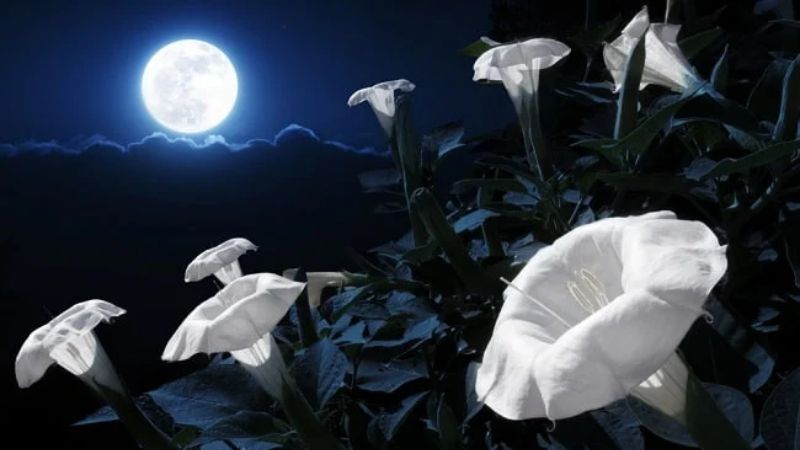 Moonflowers add a touch of magic to your garden at night
Moonflowers add a touch of magic to your garden at night
3 How to Grow and Care for Moonflowers
Growing Moonflowers
As Moonflowers are vines, they don’t require a lot of ground space. Instead, look for a structure they can climb, such as a wall, fence, or trellis.
While Moonflowers are relatively easy to grow and care for, it’s essential to prepare nutrient-rich soil to ensure successful germination and healthy growth.
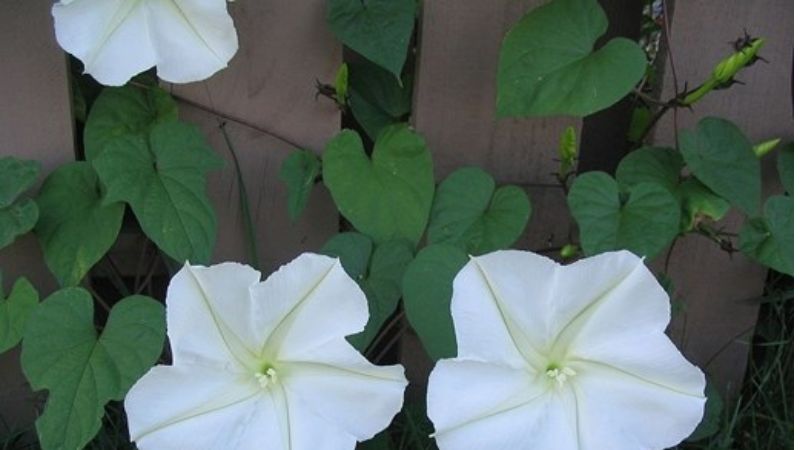 Selecting the right soil and location for Moonflowers
Selecting the right soil and location for Moonflowers
Moonflowers are quite rare in Vietnam, so it’s crucial to source your seeds carefully from reputable and reliable suppliers.
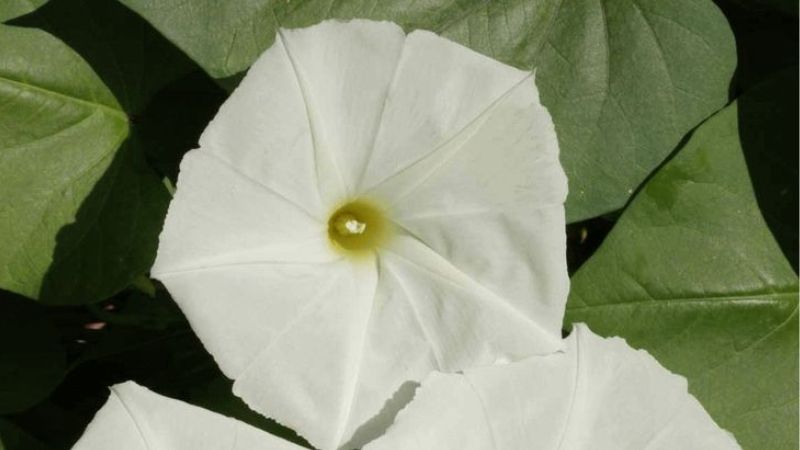 Choosing high-quality Moonflower seeds
Choosing high-quality Moonflower seeds
Take your chosen seeds and carefully plant them in the prepared soil, ensuring regular watering.
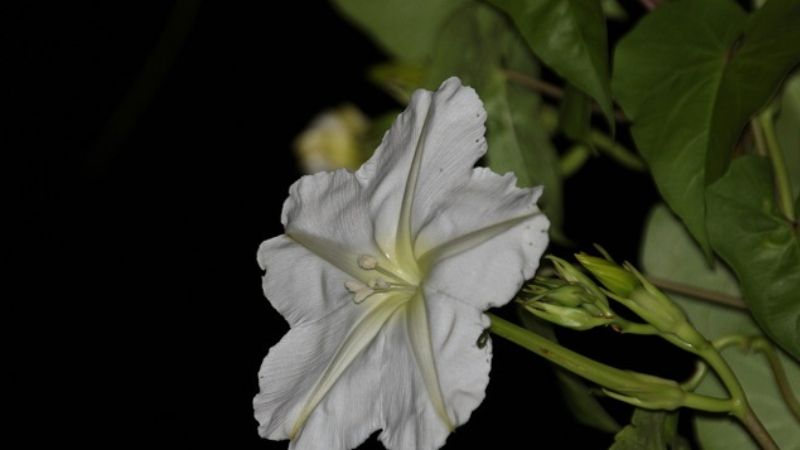 Sowing Moonflower seeds
Sowing Moonflower seeds
Caring for Moonflowers
After planting, Moonflowers require consistent care and monitoring for optimal growth. Here are some essential factors to consider when tending to your Moonflowers:
- Water: Moonflowers don’t need excessive water, so watering once a week is usually sufficient.
- Fertilizer: To encourage abundant blooming, periodically apply phosphorus-rich fertilizer. Avoid fertilizers high in nitrogen, as they promote leaf growth at the expense of flower production.
- Pruning: Some leaves may wither and die, so regular pruning is necessary to prevent the spread of diseases and pests.
 Pay attention to water and fertilizer requirements when caring for Moonflowers
Pay attention to water and fertilizer requirements when caring for Moonflowers
Important Considerations when Growing and Caring for Moonflowers
– Moonflower seeds contain lysergic acid, a highly toxic substance. Keep them out of the reach of children and pets.
– Avoid planting Moonflowers if you have young children or pets at home.
4 8 Captivating Images of Moonflowers
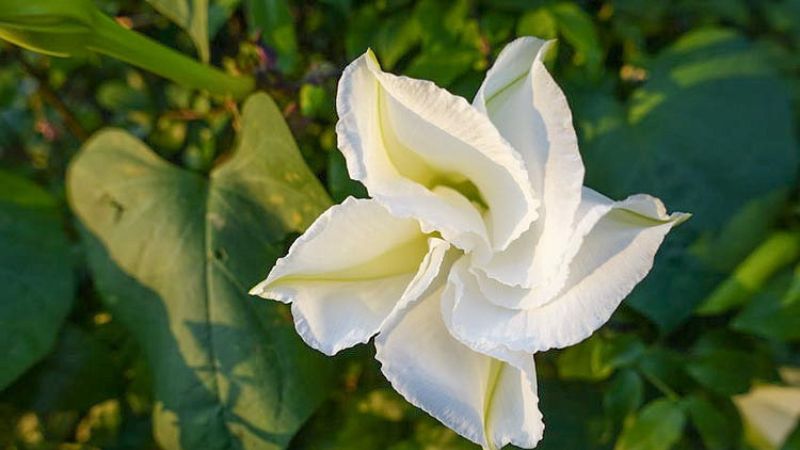 Moonflowers exude an air of mystery
Moonflowers exude an air of mystery
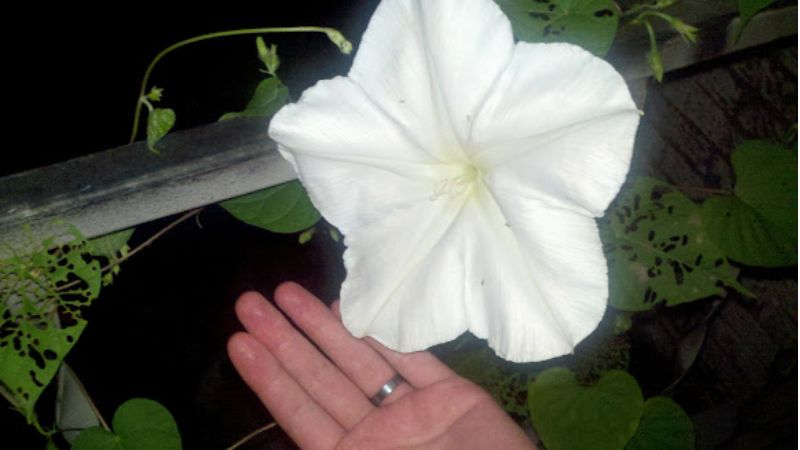 Moonflowers embody purity and allure
Moonflowers embody purity and allure
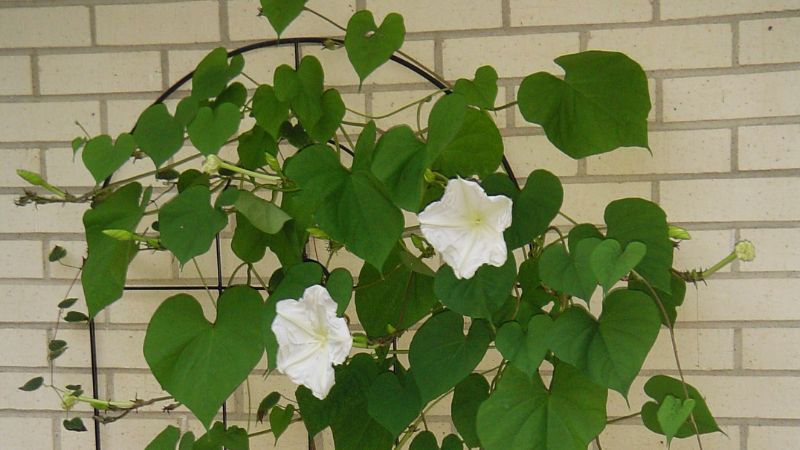 Moonflowers bloom only at night
Moonflowers bloom only at night
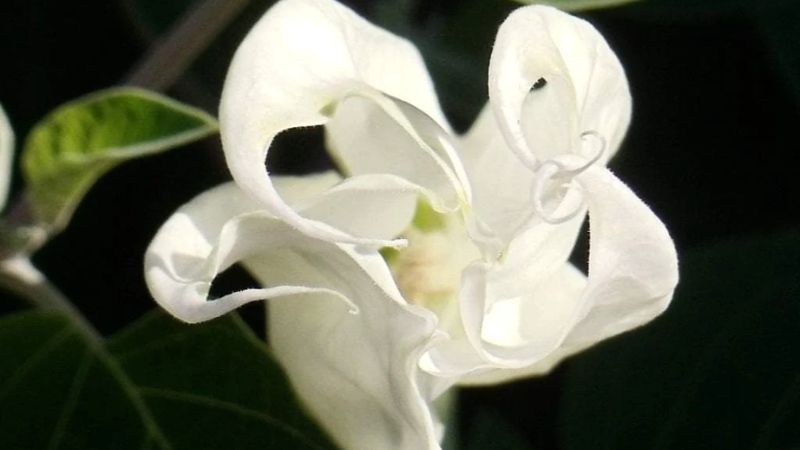 Moonflowers add a touch of splendor to your living space
Moonflowers add a touch of splendor to your living space
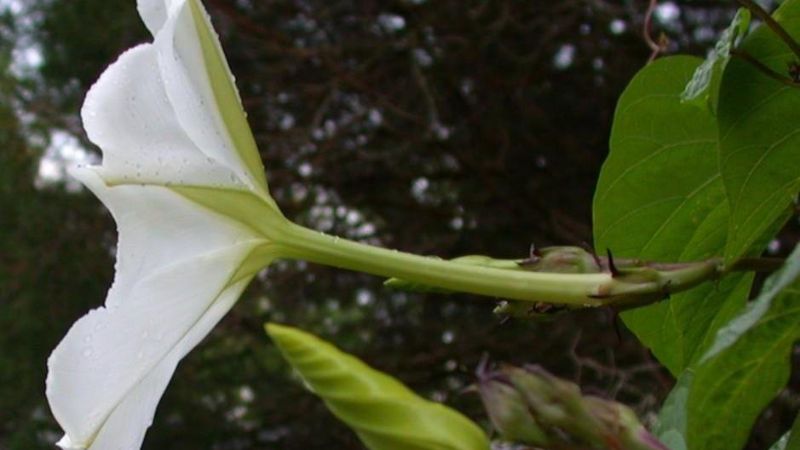 Moonflowers emit a sweet fragrance
Moonflowers emit a sweet fragrance
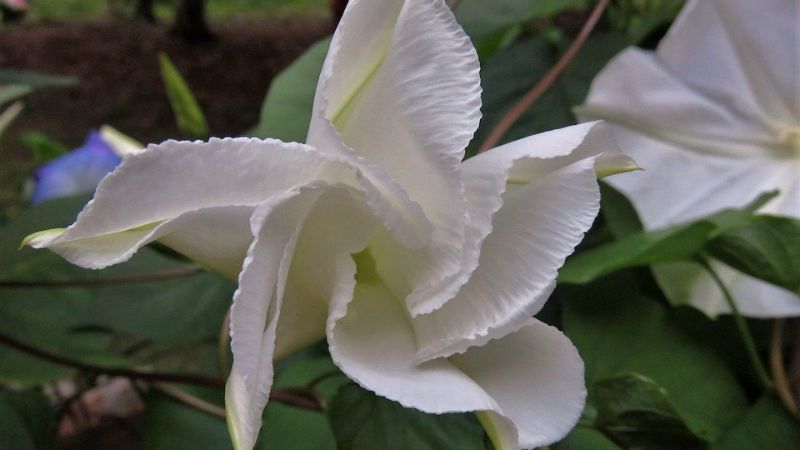 Moonflowers close their petals at sunrise
Moonflowers close their petals at sunrise
We hope you enjoyed learning about Moonflowers and how to cultivate and care for them. With this knowledge, you can introduce these exotic flowers into your garden and experience their enchanting beauty firsthand.


































